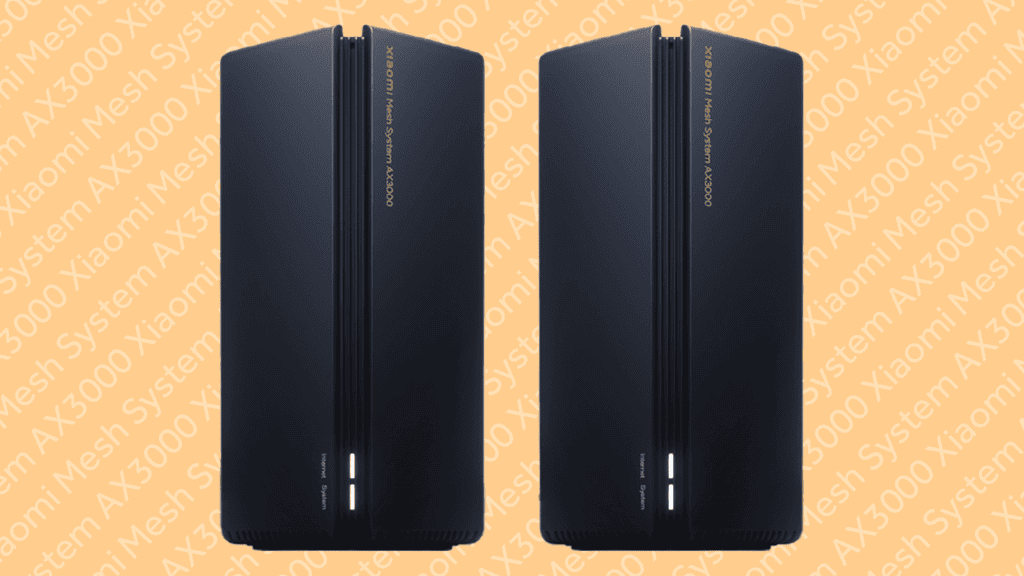In a move that left few eyebrows raised, Xiaomi has boldly stepped into the competitive world of Wi-Fi 6, unveiling its very own Xiaomi Mesh System AX3000. Entering an arena already occupied by giants like TP-Link, Netgear, and ASUS, Xiaomi aims to carve out its own niche in this crowded space. The ace up Xiaomi's sleeve? Value for money, a strategy that has often given this tech powerhouse a competitive edge.

Xiaomi's Wi-Fi mesh system
In the modern digital age, the demand for Wi-Fi mesh systems has seen a considerable surge. Their appeal lies in the ease of setup and scalability. Gone are the days of dragging wires around the house. Instead, you simply pop in an extra access point that neatly connects to the existing network. There's no need to fret over bands or matching SSIDs, as the system handles these complexities. While the traditionalists may have their reservations, the convenience of this approach is simply undeniable.
Inside the Xiaomi Mesh System AX3000
The Xiaomi Mesh System AX3000 promises wireless speeds that can reach a theoretical maximum of 2976 Mbps, hence its moniker. While there are certainly faster options available, Xiaomi's contender can potentially offer speeds three times faster than a standard wired connection at its peak. The likelihood of you exhausting the available bandwidth with daily computing tasks is slim. And the chance of finding an ISP ready to deliver such speeds is even slimmer.

However, Xiaomi's key selling point isn't raw speed. Retailing at a cool €150 (~US$175) for a two-access point system, the Xiaomi Mesh System AX3000 offers significant value for money. For those seeking higher speeds, the system is also compatible with the Mi Router AX9000, a beast of a router with such formidable power it necessitates active cooling. This powerhouse was launched prior to Xiaomi's brand makeover.
Plug-and-Play Convenience
Xiaomi's Mesh System AX3000 is designed to offer a seamless set-up experience. Once you've got the devices powered up and connected to your modem, they're good to go. The system harnesses the power of both 2.4 GHz and 5 GHz bands, providing an easy solution for congestion on your network. Simply delegate all your IoT devices to the 2.4 GHz band and reserve the 5 GHz band for your notebooks and phones.
According to Xiaomi, their Mesh System AX3000 can stably support up to 254 devices. While real-world figures may vary, it's still a commendable capacity, considering the burgeoning number of devices in modern households that demand internet connectivity.
A Fair Rival
Packed with 256 MB of RAM, a dual-core 1.0 GHz CPU (Qualcomm IPQ5000 with A53 cores), and a 2x2 setup for both 2.4 GHz and 5 GHz bands, the Xiaomi Mesh System AX3000 stands its ground against its competitors. The device doesn't necessitate active cooling, which means it operates in absolute silence. Nonetheless, be cautious of the surrounding temperature, since it does generate some heat.
A standout feature that sets Xiaomi apart is the inclusion of RJ45 ports. In addition to the WAN port, there are three 1 GbE ports, perfect for your TVs, desktops, and even your Raspberry Pis running Home Assistant.
Perhaps Not for the Tech Savvy
Mesh Wi-Fi systems, with their ease of setup, typically cater to those less tech-oriented. This is likely the case for the Xiaomi Mesh System AX3000 as well, given its resemblance to the AX9000 in terms of operating system and interface, as GSMArena pointed out.
A Matter of Trust
Ultimately, the decision to invest in the Xiaomi Mesh System AX3000 largely hinges on your comfort with entrusting your internet traffic to a Xiaomi device. The company has come a long way from its early days of producing inexpensive imitations, now boasting a product range encompassing top-notch phones, air purifiers, notebooks, and more. There's no doubt that the Xiaomi Mesh System AX3000 is set to rival more costly alternatives.
